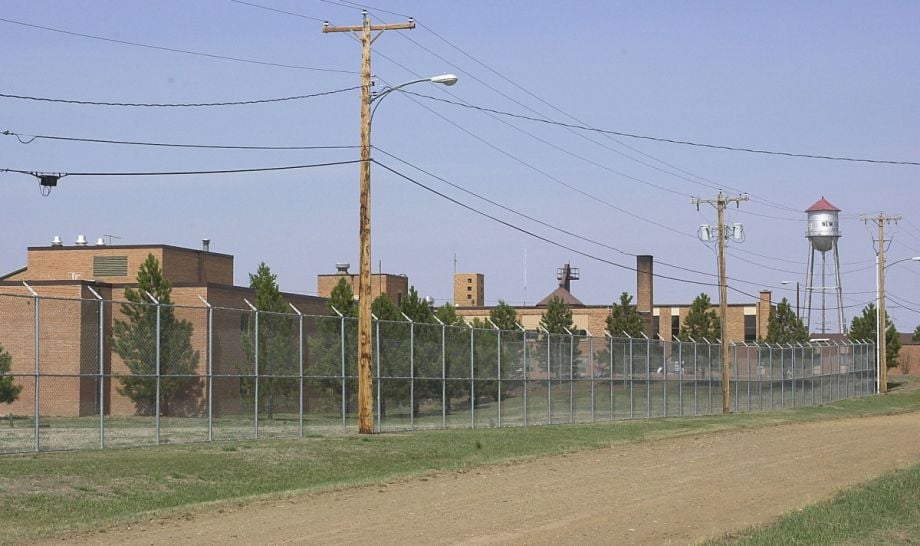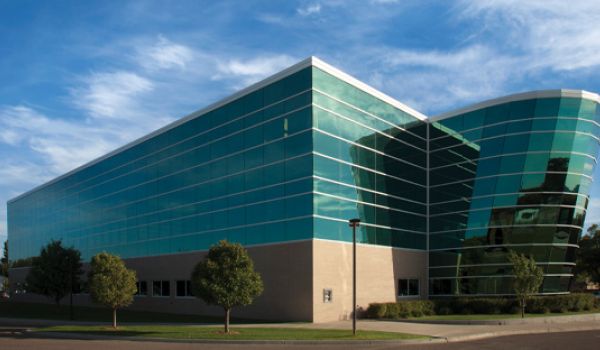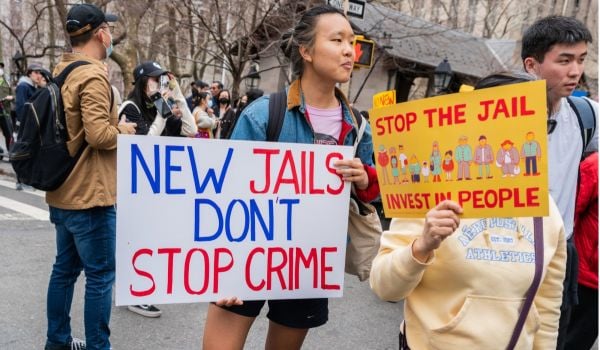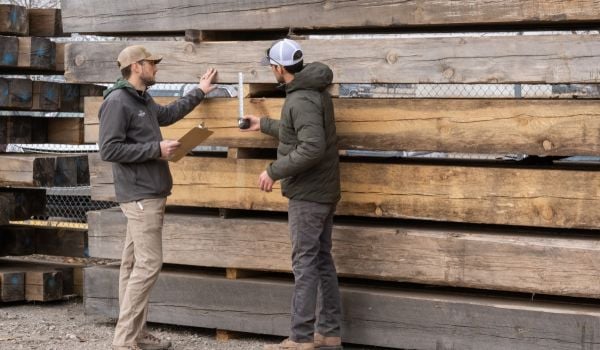The Dakota Women’s Correctional Rehab Center, North Dakota’s sole facility for women prisoners, can be found on Main Street in New England, North Dakota — population 602. It’s just under two hours’ drive west from Bismarck, the state capital, and four and a half hours from Fargo, the state’s largest city.
According to Leann Bertsch, director of North Dakota’s Department of Corrections and Rehabilitation, 90 percent of North Dakota’s female prison population is from the Bismarck area or further east, and 79 percent have children under the age of 18. Bertsch explains that a lack of family visits not only makes time in prison challenging, it’s also a key obstacle upon re-entering society after prison, not to mention the intergenerational issues or trauma, addiction, and incarceration that can arise for incarcerated mothers as well as their children.
While Republican Governor Doug Burgum is making efforts to move the women to a new facility, locals worry that doing so would essentially wipe the small southwestern North Dakota town off the map — a result some find to be at odds with the economic development-focused Main Street ND initiative on which Burgum ran for office.
And, further complicating the matter, key reforms to North Dakota’s prison system have yet to reach the women’s prison facility.
Inspired by a trip that Department of Corrections and Rehabilitation staff and leaders took to Norway four years ago inspired the reforms. That includes the state passing House Bill 1041 and Senate Bill 2015 in 2017 — reducing mandatory minimums, mandating presumptive probation for misdemeanors and low-level felonies, and requiring North Dakota counties to devise alternatives to physical custody to reduce the number of prisoners coming into the state system.
Meanwhile, the North Dakota Department of Corrections and Rehabilitation made a range of internal changes, from how it trains its officers to how it treats its inmates, modeling after what they saw in Norway. As a result, daily life for male residents of North Dakota prisons now includes poetry slams, events like the Great American Bike Race that residents and staff participate in together, and the opportunity to live outside the minimum security prison’s walls in temporary housing units: trailers salvaged from North Dakota’s shale oil boom, converted into individual rooms with shared bathrooms and doors that lock.
Although the legal changes have touched the women’s prison facility, the day-to-day operations reforms have not, according to Bertsch. She points to two main causes. Because of the facility’s rural location, the services required to implement the import model are harder to come by than they are in the more populous Bismarck and Jamestown locations where the men’s facilities are housed. Secondly, the women’s prison facility is owned by a consortium of six counties rather than the state’s department of corrections, meaning it doesn’t have to follow the internal reforms that the state department has mandated across its facilities.
Comprising 12 percent of the state’s prison population, the women in North Dakota’s prison system outpaces the national average of 7 percent. “It’s not surprising that we have such a high percentage of women incarcerated when the services we’ve been offering are subpar to what we’re providing the men,” says Bertsch.
Bertsch says that the department would share ideas and ask that similar programs be brought into the women’s facility, but that the New England Facility cited a lack of staff necessary to carry out the programs.
“There’s no ownership over the mission and the philosophy of the department,” she says. “It’s really a contract facility that’s more … in tune to collecting their paycheck and not really caring about the outcomes that the women have.”
Bertsch cites several issues with the New England facility: the lack of medical services, including medically assisted treatment for opioid addiction, a common standard of care, and the distance between the facility and the families of most of the female inmates.
Governor Burgum made addressing the women’s prison issue a clear priority in his December 5th budget address. He asked the House Appropriations Committee for $1.8 million to refurbish the Bismarck-based minimum-security Missouri Valley Correctional Center to house the state’s women’s population. He proposed shuffling the men currently at the Missouri Valley facility to temporary housing on the State Hospital campus in Jamestown, and spending $35 million from the state’s Legacy Fund to transform the State Hospital into a new minimum-security facility for men, and ultimately ending the state’s contract with the New England facility.
Rachelle Juntunen, Warden of Dakota Women’s Correctional Rehab Center, sees the issues differently.
“Some of the [criticisms] are exaggerated,” she says. “We don’t have medically assisted therapy, but I’m the midst of finding a contract to do it right now. There’s issues … that are fixable, but no one brought them forward and said ‘Hey, can you make this happen in New England?’” Juntunen explains.
Juntunen notes that the women participate in activities like cooking classes with staff, family events are held during the holidays, and that the women have opportunities to volunteer offsite as well. “[We’ve] embraced ideas brought back from Norway,” she says.
Juntunen says the first time she had heard some of the concerns was in the governor’s address. She stresses the hard-working, caring, and dedicated nature of her staff and complete agreement with the notion the women in her facility are entitled to and deserving of the same treatment as the men.
While Juntunen considers the economic ramifications of closing the facility to be secondary to the women’s needs, some residents disagree. Many, including New England’s mayor, view it as a contradiction to the governor’s Main Street initiative that focuses on revitalizing cities and towns across the state, according to the Jamestown Sun.
On Jan. 16, people wearing “I stand with New England” stickers attended a crowded public hearing on the matter, reported the Fargo InForum.
“This is just another pull-out from our small community,” Sarah Warner, sheriff of New England’s Hettinger County told the newspaper. “We need these opportunities to stay alive.”
Burgum, however, doesn’t see a conflict. “I think it’s a complete mischaracterization [of the initiative] because I don’t see prisons as economic development and I don’t see government jobs as economic development,” Burgum tells Next City. “The Main Street initiative is designed to support growth in the private sector.”
On February 19th, the House Appropriations Committee voted down Burgum’s prison funding propositions, requiring a two-year study instead.
Juntunen was pleased with the decision. “The study, I think, is the appropriate action to take. Let’s look at what appropriate and what’s not versus spending a bunch of money on temporary housing,” she says.
Burgum’s plan could still move forward in the State Senate during the legislative session that runs through April.
“It’s an uphill battle because that small town and that part of the state is basically lobbying very hard just to keep them there,” says Bertsch. “We made the case and were going to fight very, very hard to make sure that change occurs because we think it’s really important for the success of the women.”

Cinnamon Janzer is a freelance journalist based in Minneapolis. Her work has appeared in National Geographic, U.S. News & World Report, Rewire.news, and more. She holds an MA in Social Design, with a specialization in intervention design, from the Maryland Institute College of Art and a BA in Cultural Anthropology and Fine Art from the University of Minnesota, Twin Cities.
Follow Cinnamon .(JavaScript must be enabled to view this email address)
















